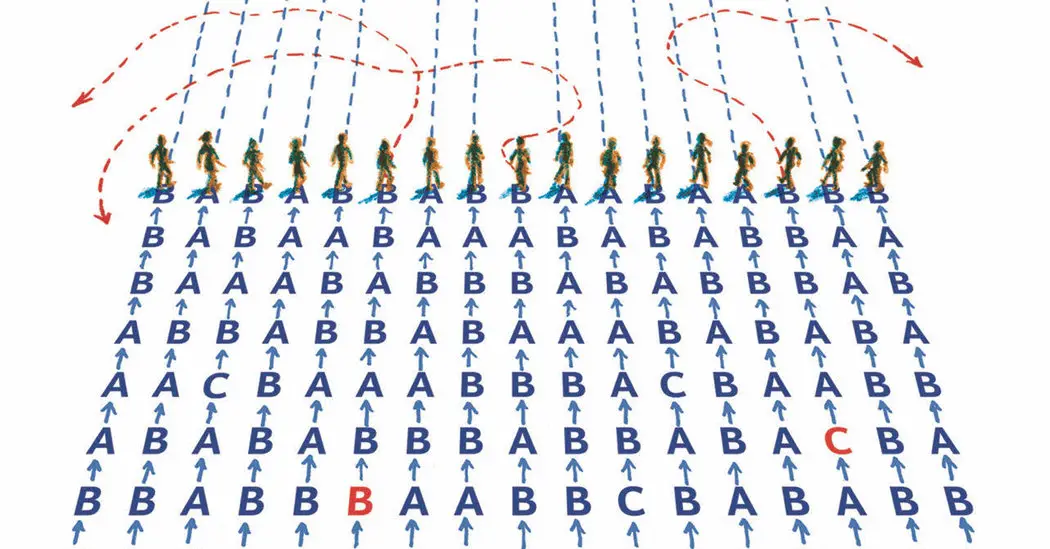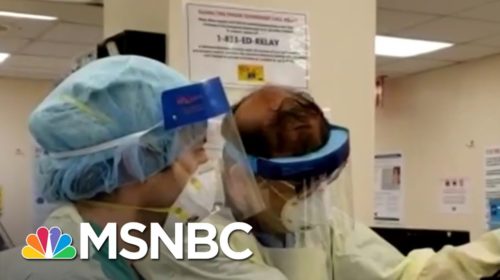Will You Graduate? Ask Big Data
Rather less than half of the nation’s college students graduate in 4 years; given two extra years to get the job performed, the proportion rises to solely about 60 %. That’s no small concern for households shouldering the extra tuition or scholar debt (a mean of greater than $28,000 on commencement, in accordance with a 2016 College Board report). Students who drop out are in even worse form. Such outcomes have led mother and father and politicians to demand faculties do higher. Big information is one experiment in how to try this.
Health care corporations and sports activities groups have been working with predictive analytics for years. But the method is in its early levels on campuses. A handful of corporations have sprung up in the previous couple of years, working with maybe 200 universities. They establish tendencies within the information and create pc applications that monitor scholar progress and alert advisers when college students go off traditionally profitable pathways.
Dr. Renick makes use of Amazon to counsel how predictive analytics work. “When Amazon appears at all of your selections of books and makes predictions that you simply’ll like different books, it doesn’t must know why you’ll just like the third e-book,” he stated. “Our large information doesn’t must know precisely why a scholar will get a foul grade. It simply occurs 1000’s and 1000’s of occasions. We’re taking a look at a sample.”
Different programs at completely different universities have proved to be predictors of success, or failure. The most important appear to be foundational programs that put together college students for higher-level work in a selected main. Across a dozen of its purchasers, the information analysts Civitas Learning discovered that the likelihood of graduating dropped precipitously if college students acquired lower than an A or a B in a foundational course of their main, like administration for a enterprise main or elementary training for an training main. El Paso Community College’s nursing sizzling spot was a foundational biology course. Anyone who acquired an A had a 71 % likelihood of graduating in six years; these with a B had solely a 53 % likelihood.
At the University of Arizona, a excessive grade in English comp proved to be essential to commencement. Only 41 % of scholars who acquired a C in freshman writing ended up with a level, in contrast with 61 % of the B college students and 72 % of A college students.
“We all the time figured that if a scholar acquired a C, she was high quality,” stated Melissa Vito, a senior vice provost. “It seems, a C in a basis course like freshman composition will be an indicator that the coed shouldn’t be going to succeed.” The college now is aware of it must throw extra sources at writing, particularly at these C college students.
At Middle Tennessee State University, History 2020, an American historical past course required for many college students, has been a strong predictor. The most constant characteristic for individuals who didn’t graduate was that they acquired a D in it. “History is a heavy studying course,” stated Richard D. Sluder, vice provost for scholar success, “so it signifies a necessity for studying comprehension.”
Before predictive analytics, Dr. Sluder stated, most of the D’s went unnoticed. That’s as a result of advisers had been primarily monitoring grade-point averages, not grades in particular programs. “You take a scholar who’s getting A’s and B’s and also you see a C on this one class,” he stated, “and also you’d say, ‘He appears high quality.’ But, actually, he was in danger.”
Such perception could revolutionize the way in which scholar advising works.
Among the historic information that the training tech corporations analyze are SAT and ACT scores; private and demographic data; programs that college students are taking and grades they’re getting; and behaviors like how often they’re seeing advisers and tutors and the way actively they’re participating within the campus networks the place professors submit homework assignments, lecture notes, feedback and grades.
The analytics applications know the paths that profitable college students have adopted. When a scholar veers off that path, like getting a low grade in a predictor course or taking a course out of sequence, advisers get an alert, a sign to succeed in out to the coed and supply strategies.
One perennial downside is that college students register for the fallacious courses. “Students suppose they’re signing up for a selected lab for chem majors,” Dr. Renick stated, “but it surely seems to be for nonmajors. In the previous we would not study that till the coed was already within the class and even after he had completed the course. Now we’re getting an alert and we get the coed into the appropriate class. We had 2,000 college students like this final yr.”
The advisers are linked in order that their notes and conferences with college students can be found for colleagues, simply as medical doctors in hospital programs share notes on sufferers.
Most universities haven’t been utilizing large information lengthy sufficient to see enchancment in four- or six-year commencement charges. But some proof signifies a optimistic affect. The faculties which have seen some success have mixed analytics with vital funding in different initiatives. Georgia State has greater than doubled its advising workers, to about 100, and now meets the nationwide normal of 1 adviser for 300 college students. “It’s a heavy load,” Dr. Renick stated, “however up to now we had 750 to at least one.” In 2016, Georgia State’s four-year commencement fee rose 5 share factors, to 27 %, and the six-year fee rose 6 factors, to 54 %.
Georgia State is sharing know-how with 10 different universities in a coalition known as the University Innovation Alliance. The alliance has pledged to graduate a further 68,000 college students within the subsequent eight years.
Middle Tennessee State, which like Georgia State has many low-income, minority college students, started working with the large information firm EAB in fall 2014. Since then, it has greater than doubled its advising workers, to 78, expanded free tutoring to 200 topics from about 20, redesigned 27 basis programs and began monitoring scholar progress weekly.
“All of that is vital,” stated Dr. Sluder. “But the know-how is essential. Take out all of the know-how and also you simply don’t get that finish outcome.” Freshman retention at Middle Tennessee has risen 5 share factors, to 76 %, in simply two years.
A number of universities are growing their very own applications. In September, college students at Stanford started utilizing a digital device primarily based on 15 years of information that helps them within the daunting job of selecting from amongst some 5,000 undergraduate courses.
“No single adviser, nevertheless sensible and alert, can presumably concentrate on all the educational alternatives,” stated Mitchell L. Stevens, an affiliate professor of training who led within the growth of this system.
Freshmen on the University of Michigan started utilizing a device within the fall that mixes their private and educational information with information on how earlier college students did, recommendation from them and examine guides from professors. After college students full a survey about their expectations for achievement in a course, this system digs into the information to see if these expectations are reasonable. When they signal on, it takes them via questions and solutions in what appears like a dialog.
“Hello, Kate. You instructed us that the grade you need to obtain is a B. This is an effective aim for you. You ought to be extra assured that you could obtain this! What for those who purpose for a good increased grade?”
Tim McKay, the professor of physics, astronomy and training who created the applying, known as ECoach, stated 1000’s of scholars who commonly used the applying over six years of testing typically earned a 3rd of a letter grade increased — from a B- to a B, as an illustration — than those that didn’t use it.
At the University of Arizona, Sudha Ram, the director of Insite: Center for Business Intelligence and Analytics, has been experimenting with monitoring freshmen — the class of scholars probably to drop out — as they swipe their identification playing cards to go to the library or health club, pay for a meal within the cafeteria or purchase a sweatshirt within the bookstore.
“We are measuring social interplay,” Dr. Ram stated. “How many individuals do they have an inclination to hang around with for various actions, and is their hanging out dropping off week by week or getting stronger? A number of theoretical work has been performed on this.”
The findings are put into algorithms to foretell who’s at risk of not making it to sophomore yr.
“Most of the predictive-analytics persons are taking a look at grades,” Dr. Ram stated. “A number of occasions it’s not the grades however whether or not they really feel comfy and socially built-in. If they aren’t socially built-in, they drop out.”
Dr. Ram has tracked almost 30,000 college students during the last three years. Matching her findings towards precise dropouts, she stated, she has an accuracy fee of about 85 %, however her venture continues to be within the testing part. She says identities are saved non-public.
That’s a significant concern about large information: that scholar particulars may change into public. It shouldn’t be the one subject. Martin Kurzweil, a program director at Ithaka S + R, an training analysis group, worries that college students whose efficiency is setting off alarms could possibly be discouraged from following their ardour. “Algorithm shouldn’t be future,” he stated. “It’s vital that human judgment isn’t faraway from the method and that there’s all the time a possibility for a scholar to attraction a pathway that’s being plotted for them.”
Another concern: the temptation to weed out at-risk college students to enhance a college’s rating. Could it occur? Mr. Kurzweil cites the president of Mount St. Mary’s University, in Maryland, who famously wished to “drown the bunnies” who struggled.
“There are dangers,” Mr. Kurzweil stated. “But I believe the folks in predictive analytics are largely white hats, they usually’re doing it as a result of they actually consider they’re serving to college students.”
Still, he described the sector as just a little just like the Wild West: “They’ve pushed forward rapidly with out organising the sorts of requirements and governance that can mitigate danger.”
In June, Ithaka S + R and a crew from Stanford introduced collectively 73 specialists from universities, analytics corporations, foundations and the Department of Education for 3 days of dialogue on growing requirements and moral tips for giant information on school campuses. They met on the Asilomar Conference Grounds on the Monterey Peninsula, the place 41 years earlier scientists began work on the primary tips for genetic analysis.
Some universities are staying on the sidelines. The monetary dedication — a half-million or extra over the course of a three-year contract that features information evaluation, software program and coaching — is critical. Some are merely uneasy concerning the idea, Mr. Kurzweil stated, or will not be satisfied predictive analytics actually works.
Laura Mercer, chief of workers to the president of Sinclair College, a two-year college in Dayton, Ohio, tells a narrative to counter that view. At Sinclair, a C generally psychology or in “Foundations of Business” was discovered to be an indication that college students majoring in these topics received’t make it. She determined to try the information of some college students who had taken the psychology course.
One lady who was planning to main in psychology had taken it and three different programs as a freshman within the fall of 2014. She earned three A’s and a C.
“It was a reasonably respectable begin,” Ms. Mercer stated. “But guess what? The C was in Psych 1100.” In the spring of 2015, the coed signed up for 5 courses. She withdrew from one. The subsequent semester she withdrew from three of her 5 courses. This fall she took 4 courses and withdrew from all of them.
“It was simply what the analytics had predicted,” Ms. Mercer stated. “I are usually just a little skeptical. It wasn’t till I dove into the information and I noticed, ‘Yes, certainly, this can be a downside.’ ”
An earlier model of this text misstated the capabilities of a Stanford device to assist college students select programs. It doesn’t advocate programs, or have an alert system in response to selections a scholar makes.






